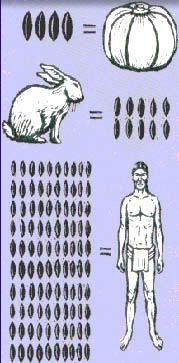(Hope all of your weeks have started off well)
.... and welcome to the second sensational session of....
HISTORY 101
A segment of obscure and sometimes pointless information!...
This week:
Chocolate - Part 1
The Tree
The tree at the heart of this sublime subject, has grown wild in Central America since prehistoric times. The cocoa tree's scientific name couldn't be more apt; theobroma cacao is Greek for "food of the gods" and the first people to make use of it were the Maya, an ancient people who lived in the Yucatan Peninsula in South America, as long ago as 600 AD.
The Mayan
The word chocolate is said to have been derived from the Mayan xocolatl which meant bitter water.
Cocoa comes from the Aztec cacahuatl. The Mexican Indian word chocolate comes from a combination of the terms choco (foam) and atl (water) because for centuries early chocolate was only consumed as a drink.
The Maya harvested cocoa beans from the rain forest trees then later cleared areas of the forest to make way for the first known cocoa plantations. The Mayan knew a good thing when they saw it and worshiped the cocoa bean as an idol. The merchant god, Ek Chuah, was closely linked with cocoa and the beans were used as currency. Early explorers to the region found that four cocoa beans could get you a pumpkin, 10 a rabbit and 100 would buy you a slave.

Cocoa beans also formed the basis of a drink; xocolatl was a rather bitter little potion made from roasted cocoa beans, water and spices. Cocoa's soothing qualities were also discovered early on and it was used for the treatment of coughs, fever and even discomfort during pregnancy.
Mayan farmers traded their cocoa beans at market but wealthy merchants traveled further afield, some as far as Mexico, the land of the Aztecs…
The Aztecs
The Aztecs also held the cocoa bean in high esteem, and their delightful story about its origins involves their creator and god of agriculture, Questzalcoatl. The Aztecs also associated chocolate with Xochiquetzal, the goddess of fertility (Questzalcoatl's momma).

The Aztecs were an ancient, nomadic people who founded Tenochtitlan; a vast city in the Valley of Mexico in 1325. Because of their dry climate the Aztecs were unable to grow cocoa trees themselves so they had to obtain supplies of cocoa beans from trade or 'tribute'. This was a form of taxation paid by the tribes they conquered.
Like the Mayans, the Aztecs also consumed large quantities of xocolatl as a luxury drink. However their version was described as 'finely ground, soft, foamy, reddish, bitter with chili water, aromatic flowers, vanilla and wild bee honey,' - slightly more inviting than the Maya concoction!
The xocoatl was said to be an acquired taste. Jose de Acosta, a Spanish Jesuit missionary who lived in Peru and then Mexico in the later 16th century, wrote of it:
"Loathsome to such as are not acquainted with it, having a scum or froth that is very unpleasant to taste. Yet it is a drink very much esteemed among the Indians, where with they feast noble men who pass through their country. The Spaniards, both men and women, that are accustomed to the country, are very greedy of this Chocolaté. They say they make diverse sorts of it, some hot, some cold, and some temperate, and put therein much of that "chili"; yea, they make paste thereof, the which they say is good for the stomach and against the catarrh".

Descendant of Xocolatl: The Modern Hot Chocolate
It was in this form that Montezuma drank up to 50 mugs a day in order to keep his harem smiling (tsk tsk, such a greedy man - with both chocolate and women) and also where the once common phrase “Montezuma’s revenge” derives from, as the ingredients used in the drink acted as a mild laxative.
Cocoa was used in ceremonies too, including ritual human sacrifices where the heart of the victim was replaced with a cocoa pod: this didn’t do much for their life expectancy! (brings new meaning to the phrase "to die for", doesn't it?)
The Aztecs also used the cocoa bean for currency and by the time the Spanish invaded Mexico in the 16th century the Aztecs had created a powerful empire.
(Note: In no way is all of the above my original writing. I have taken bits and pieces of info from here and here. Might have summarized/ reworded/ added a few comments, but that's about it)
That's all for today....
:)
TAGS: Weblog, Blog, Malaysia, Personal, Chocolate, Aztec, Mayan, Interesting, Trivia, History







good work!!
ReplyDeletevery interesting!!!